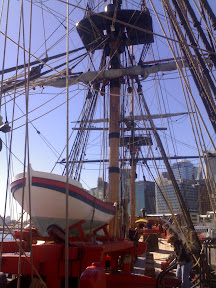Red Hen Blue2CAN for Nikon D3 and D300 GPS cameras review
Article by Mike Barrett
March 29, 2008
Last year Nikon announced the latest in their range of Digital SLR cameras, the D3 and D300. These are targeted at the top of the range with a price tag of £3400 for the D3 (yes that is three thousand) and a slightly more affordable £1300 for the D300.
Red Hen Systems have produced a tiny Bluetooth adapter that connects to a bluetooth GPS and transmits the GPS data to the camera: the Blue2CAN. The Blue2CAN retails at $279 USD.
Both new Nikon cameras have a special 10 pin connector which amongst other functions allows you to connect a GPS to the camera. This then provides a NMEA datastream from which the camera can extract the positional information and stamp the image meta data with the location that the picture was taken.
In the last year I have reviewed a number of GPS systems that offer a mechanism to match GPS tracks to digital photos. Whilst these do work they add an additional step into the workflow and the possibility of errors creep in with each additional step. The beauty of this system is to have the camera stamp the image when the shutter is pressed.
To get started the Blue2CAN and your Bluetooth GPS need to connect to each other. Technically this is known as pairing.
The Blue2CAN should be attached when the camera is switched off. As soon as you switch on the adapter's LED will flash 3 times within a second and will then start looking for GPS devices. If it doesn't find a Bluetooth GPS then it will go to sleep for 20 seconds and then search again. This will continue until it manages to pair with a GPS. There is little feedback during this process and it can be a little disconcerting whilst waiting for it to happen.
Once paired you need to tell the camera to record the GPS position with the image. This is achieved by pressing the menu button, selecting GPS, then "Auto meter" then select "enable".
I was amazed how simple Red Hen had made this process. The main issue with Bluetooth devices is getting them paired, for some reason it is either simple or very complex. I am fortunate enough to have over 20 different Bluetooth GPS receivers and in my tests only 3 failed to connect to the Blue2CAN. These were a Globalsat BT-359, a B-Speech GPS 20C and Evermore BT GPS receivers. I suspect that this is because they need a passcode to pair.
Another interesting feature is that even if the camera is switched off the Blue2CAN will still remain active and paired to the Bluetooth GPS receiver. This enables it to instantly have the connection when the camera is switched on, a great idea! Unless of course you use the GPS with a phone or a PDA. The GPS can only connect to one device at a time. It took me a while to work out what had gone wrong with my PDA navigation, with my camera in the boot of the car the GPS was still connected so my PDA couldn't get a connection. I overcame this by luck by switching the GPS off and on again.
Although the Blue2CAN is constantly powered whilst connected I found there was more than enough power in a charge to take hundreds of pictures over a 3 day period (some including the built in flash) and still have about 30% left in the battery.
The Red Hen Systems Blue2CAN is a Bluetooth adapter for the high end Nikon digital cameras allowing the connection of a Bluetooth GPS receiver. The compatibility of the adapter was impressive, working seamlessly with a huge range of Bluetooth GPS receivers.
The installation and setup is simple and required no technical knowledge. If you are capable of operating one of these Nikon cameras then you are well over-qualified to set up the GPS for the camera.
 In my experience, a better geotagging solution does not exist. It’s a small gadget about the size of your thumb that plugs into a small port on the front of several Nikon Digital SLRs, including the D200, D2X, D2Xs and D2Hs. It communicates wirelessly to any Bluetooth GPS receiver (like the kind that comes with inexpensive navigation programs and sits on your dashboard).
In my experience, a better geotagging solution does not exist. It’s a small gadget about the size of your thumb that plugs into a small port on the front of several Nikon Digital SLRs, including the D200, D2X, D2Xs and D2Hs. It communicates wirelessly to any Bluetooth GPS receiver (like the kind that comes with inexpensive navigation programs and sits on your dashboard). The "earth first" potential of the NASA/Google alliance takes on additional significance given the wide blog-o-sphere announcement of the International Symposium on Digital Earth get-together in San Francisco in this coming June.
The "earth first" potential of the NASA/Google alliance takes on additional significance given the wide blog-o-sphere announcement of the International Symposium on Digital Earth get-together in San Francisco in this coming June.







